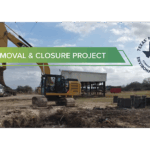Understanding the Purpose of Phase 1 Environmental Site Assessment
An Environmental Site Assessment (ESA) is a critical tool used by property owners, developers, and lenders to evaluate potential environmental liabilities associated with a property. The Phase 1 ESA provides a detailed analysis of the site’s historical and current land use, identifying potential sources of contamination and assessing the risk of environmental hazards.
A Phase 1 ESA is typically conducted prior to property acquisition or financing to ensure that any potential environmental liabilities are identified and managed before they become significant financial burdens. It not only helps protect the health and safety of occupants but also ensures compliance with relevant environmental regulations.
Importance of Environmental Site Assessment
Environmental Site Assessments play a vital role in due diligence for real estate transactions. By conducting a Phase 1 ESA, potential buyers or lenders can gain a comprehensive understanding of the environmental risks associated with a property. This knowledge allows them to make informed decisions and take necessary precautions to mitigate environmental liabilities.
Moreover, conducting an ESA is not just a legal requirement but also a socially responsible action. It demonstrates a commitment to environmental stewardship and safeguards the interests of future occupants and the surrounding community.
Key Components of Phase 1 Assessment
A Phase 1 Environmental Site Assessment involves a thorough investigation and evaluation of various elements related to the property. These include:
- Review of historical records, including aerial photographs, maps, and property records.
- Interviews with current and past property owners, occupants, and neighboring property owners.
- Site inspection to identify any visible signs of contamination or environmental hazards.
- Evaluation of regulatory databases to identify any known environmental compliance or enforcement issues.
- Review of federal, state, and local government records and permits.
- Assessment of nearby properties for potential impacts on the subject property.
The review of historical records is a crucial step in the Phase 1 ESA process. By examining aerial photographs, maps, and property records, environmental consultants can gain valuable insights into the past land use activities on the property. This information helps identify any potential sources of contamination, such as previous industrial activities or the presence of underground storage tanks.
Interviews with current and past property owners, occupants, and neighboring property owners provide additional valuable information. These interviews can reveal any known or suspected environmental issues, such as spills or releases that may have occurred on the property. They also help in understanding the operational history of the site and any potential risks associated with it.
During the site inspection, environmental consultants carefully examine the property for any visible signs of contamination or environmental hazards. This includes looking for evidence of spills, leaks, or improper storage of hazardous materials. The inspection also involves assessing the condition of buildings, structures, and infrastructure that may pose environmental risks.
In addition to the on-site investigation, the evaluation of regulatory databases is an essential component of the Phase 1 ESA. This step involves searching various databases to identify any known environmental compliance or enforcement issues related to the property. It helps in understanding if the property has been subject to any violations or penalties in the past, which may indicate potential environmental liabilities.
Reviewing federal, state, and local government records and permits is another crucial aspect of the Phase 1 ESA. This step helps in identifying any permits or licenses that have been issued for the property, such as permits for hazardous waste storage or discharge. It also provides insights into any past or ongoing environmental investigations or remediation activities that may have taken place on the site.
Lastly, the assessment of nearby properties is an important consideration in the Phase 1 ESA. This involves evaluating the potential impacts of neighboring properties on the subject property. For example, if there is a known contamination source nearby, such as a leaking underground storage tank, it could pose a risk of contaminating the subject property. Understanding these potential impacts is crucial for accurately assessing the environmental risks associated with the property.
The Process of Conducting a Phase 1 Environmental Site Assessment in Ocala
Initial Site Inspection
The first step in a Phase 1 ESA is conducting an initial site inspection. Qualified environmental professionals visit the property to visually assess the site, identify potential environmental concerns, and document their findings. They look for signs of environmental contamination, such as evidence of spills, leaks, or storage of hazardous materials.
If any potential hazards are identified during the site inspection, further investigation and sampling may be required to assess the extent and significance of the contamination.
Historical Review of the Site
Conducting a thorough historical review is crucial to understanding the past uses of the property and identifying potential sources of contamination. This review includes accessing historical records, such as aerial photographs, topographic maps, fire insurance maps, and city directories.
By examining these records, environmental professionals can uncover any historical activities that may have impacted the property, such as gas stations, dry cleaners, or industrial operations. This information is essential in determining potential environmental risks.
Evaluation of Surrounding Properties
Assessing the surrounding properties is an integral part of the Phase 1 ESA process. Environmental professionals evaluate nearby properties to determine if any potential environmental hazards or historical uses pose a risk to the subject property.
Factors considered during this evaluation may include the presence of underground storage tanks, proximity to contaminated sites, or the potential for pollutant migration through soil or groundwater. This analysis helps determine the overall environmental condition of the area and its potential impact on the subject property.
Regulatory Framework for Environmental Site Assessments
Federal and State Regulations
Environmental Site Assessments are subject to a regulatory framework that outlines the scope, methodology, and standards that must be followed. At the federal level, the Environmental Protection Agency (EPA) has established the All Appropriate Inquiries (AAI) rule, which sets the baseline standards for Phase 1 ESAs conducted for the purposes of liability protection under the Comprehensive Environmental Response, Compensation, and Liability Act (CERCLA).
In addition to federal regulations, each state may have its own specific requirements for conducting Phase 1 ESAs. It is crucial to consider both federal and state regulations when conducting an assessment in Ocala or any other jurisdiction.
Ocala’s Local Environmental Policies
Ocala, like many other municipalities, has implemented local environmental policies and regulations to protect public health and the environment. These policies may include additional requirements for conducting environmental assessments and managing potential environmental risks.
Environmental professionals conducting Phase 1 ESAs in Ocala must be familiar with these local regulations to ensure compliance and provide accurate assessments that meet the specific needs of the area.
Potential Environmental Risks and Hazards in Ocala
Soil Contamination Risks
Ocala’s history of industrial activities and land use may pose potential soil contamination risks. Industries such as manufacturing, automotive repair, and dry cleaning could have released hazardous substances, leading to soil pollution. Conducting soil sampling and analysis is crucial to identify any potential contamination, assess its impact, and determine suitable remediation strategies.
Groundwater Contamination Concerns
Ocala has a reliance on groundwater as a drinking water source, making the protection of this vital resource a top priority. Potential sources of contamination include underground storage tanks, spills, or improper handling and disposal of hazardous materials.
Conducting a Phase 1 ESA in Ocala assesses the potential risks to groundwater and ensures appropriate measures are taken to prevent contamination or mitigate any existing contamination.
Interpreting the Results of a Phase 1 Environmental Site Assessment
Understanding the Assessment Report
Once the Phase 1 ESA is completed, the findings are compiled into an assessment report. This report provides a comprehensive summary of the assessment process, including the historical review, site inspection, and evaluation of potential environmental risks.
Environmental professionals present their findings, conclusions, and recommendations in a clear and concise manner to facilitate informed decision-making. The report highlights any potential environmental liabilities and provides guidance on further investigations or remediation, if necessary.
Implications for Property Development
The results of a Phase 1 ESA can have significant implications for property development. Potential environmental liabilities identified during the assessment may impact property values, financing, and the ability to obtain regulatory approvals. Remediation measures may also need to be undertaken to mitigate risks and ensure compliance with environmental regulations.
By conducting a Phase 1 ESA, property owners and developers can proactively address any environmental concerns, allowing for the smooth execution of development plans while safeguarding public health and the environment.
As you consider the complexities and potential environmental liabilities associated with property development in Ocala, partnering with a knowledgeable and experienced environmental consulting firm is crucial. ESE Partners, with our expertise in environmental science and engineering, stands ready to guide you through the Phase 1 Environmental Site Assessment process. Our commitment to responsibly moving business forward through environmental problem solving ensures that your project will be handled with the utmost care and professionalism. Whether you need assistance with water compliance, due diligence, remediation, or navigating the new USACE review process for DA permit applications, our team is equipped to deliver honest, quality-driven results. Request A Proposal today and let ESE Partners become your trusted ally in achieving a successful and environmentally responsible property development in Ocala.









